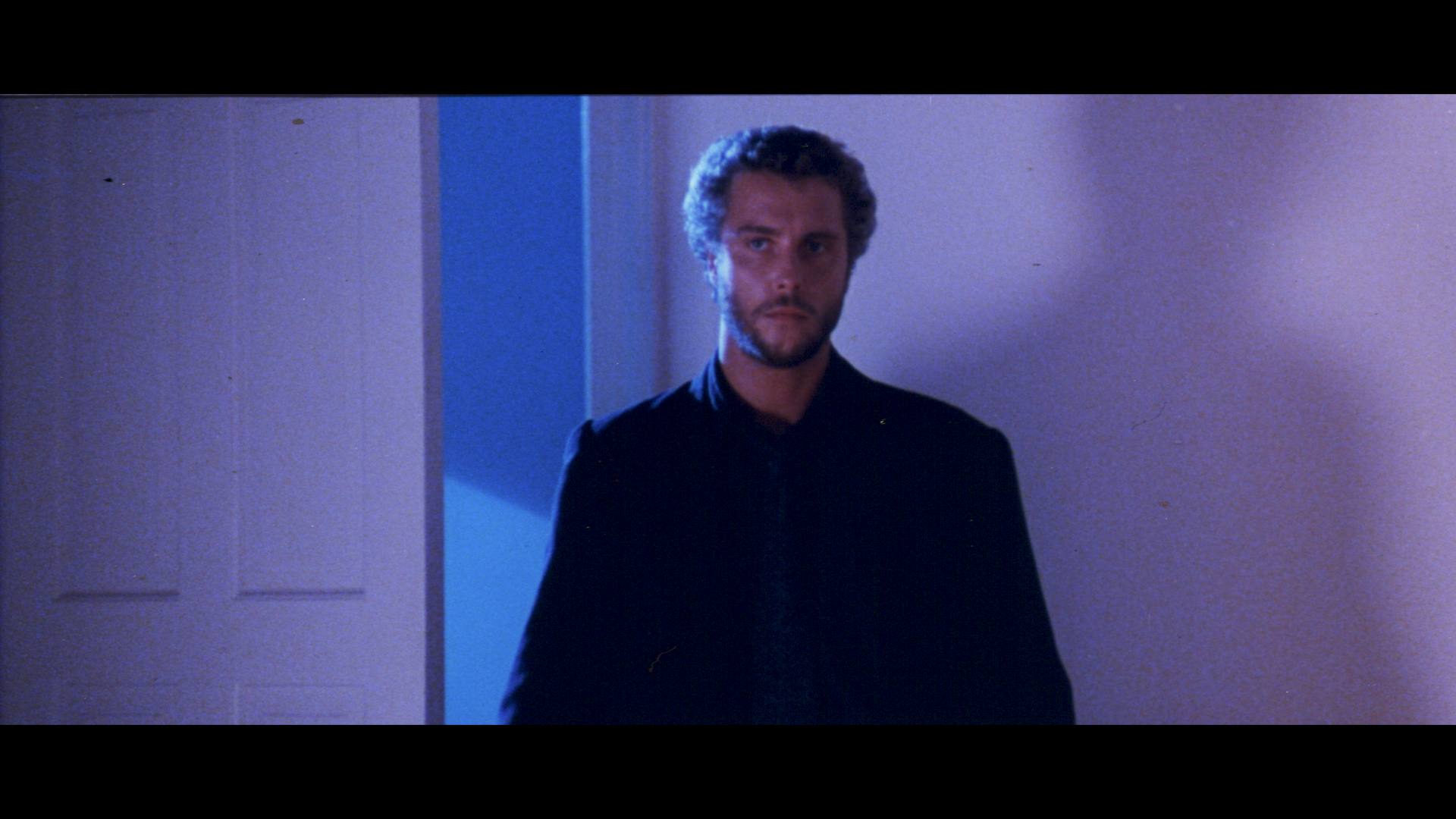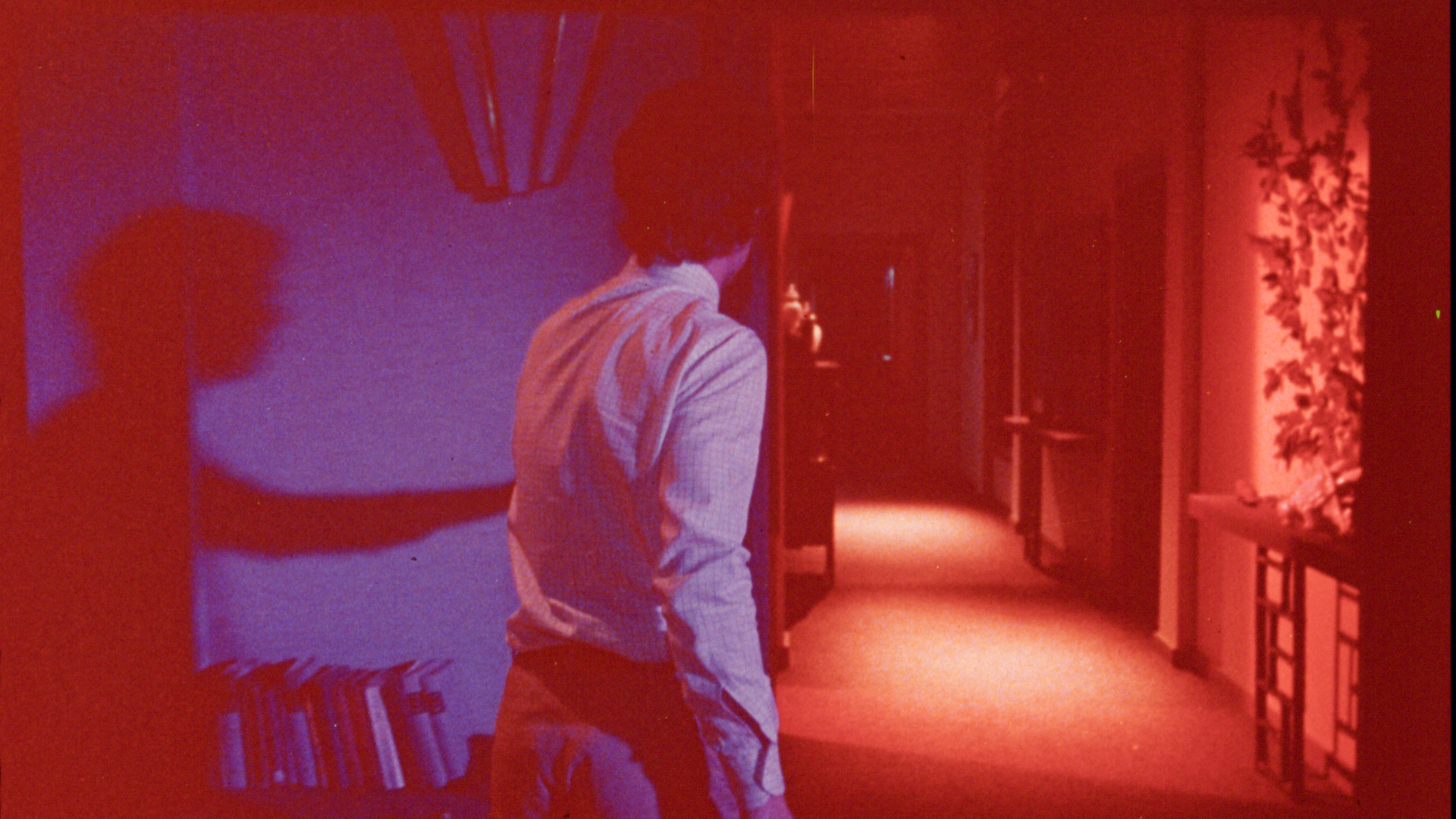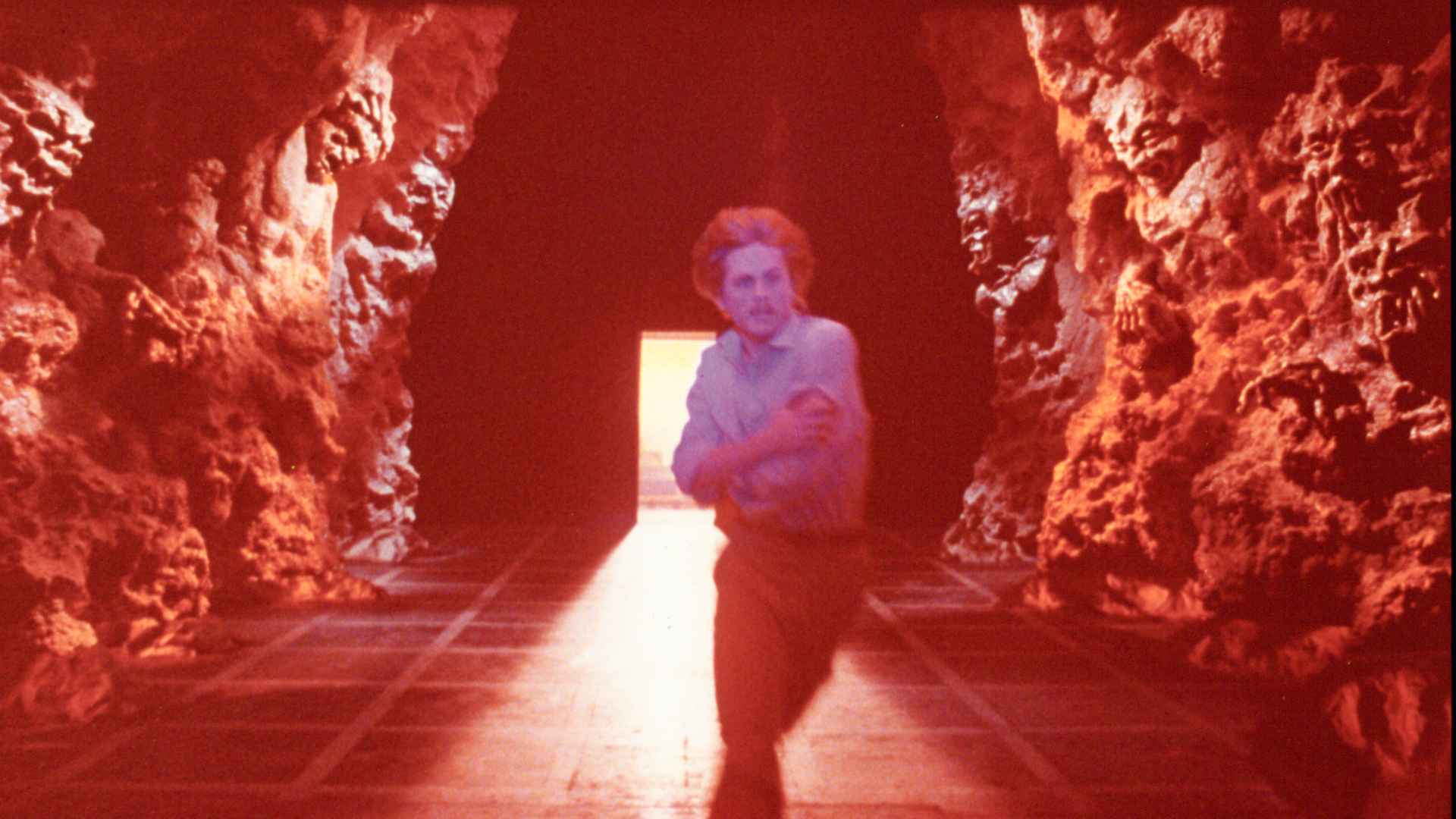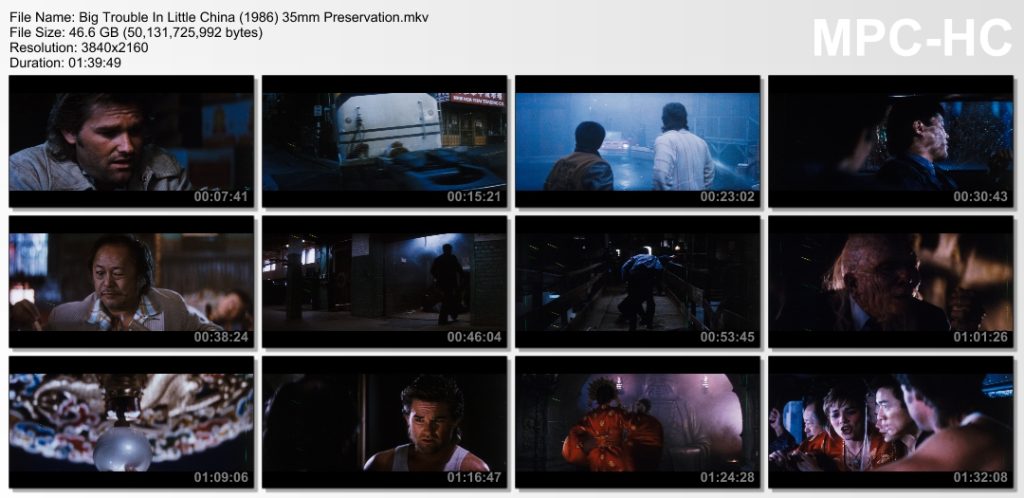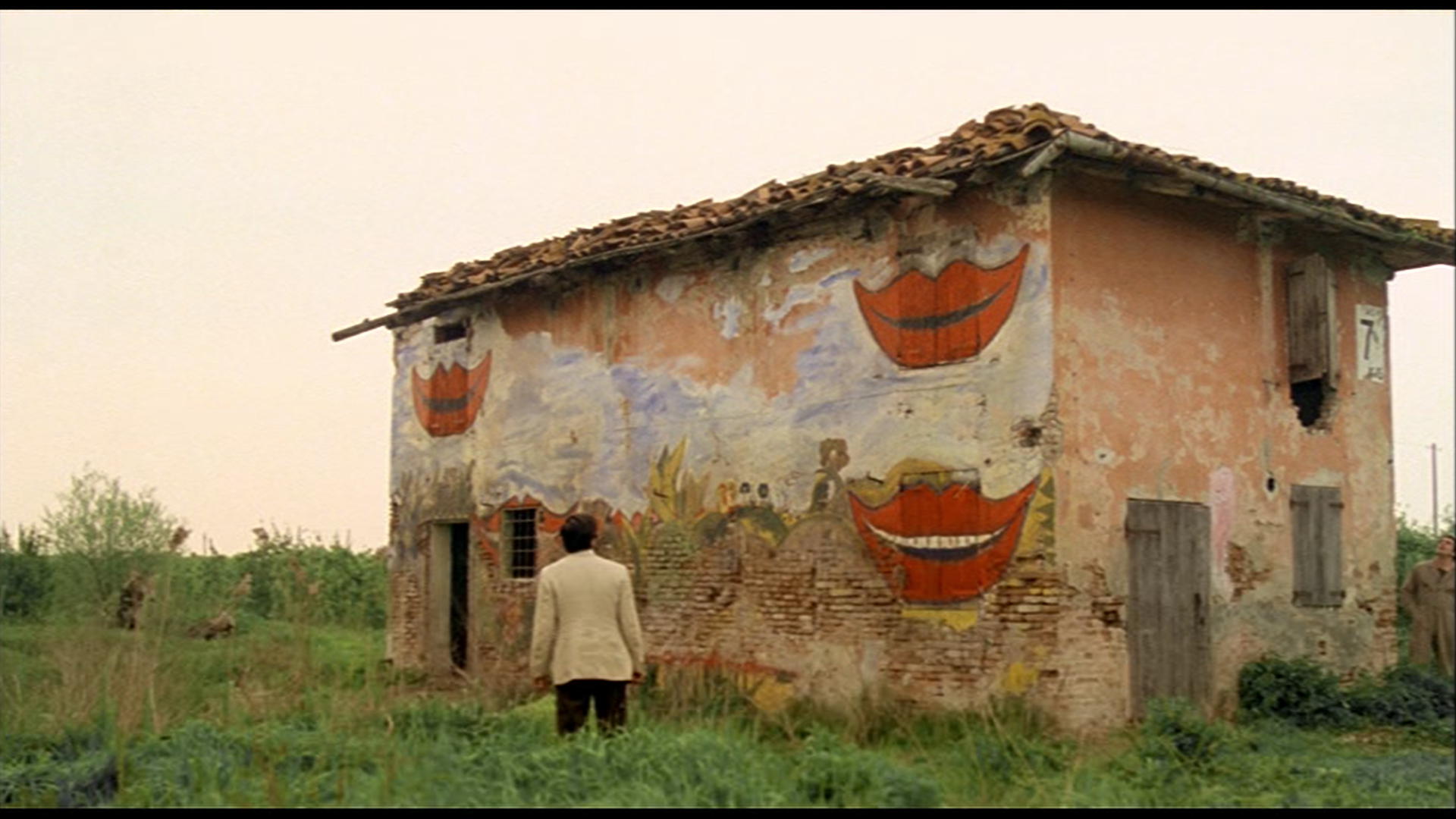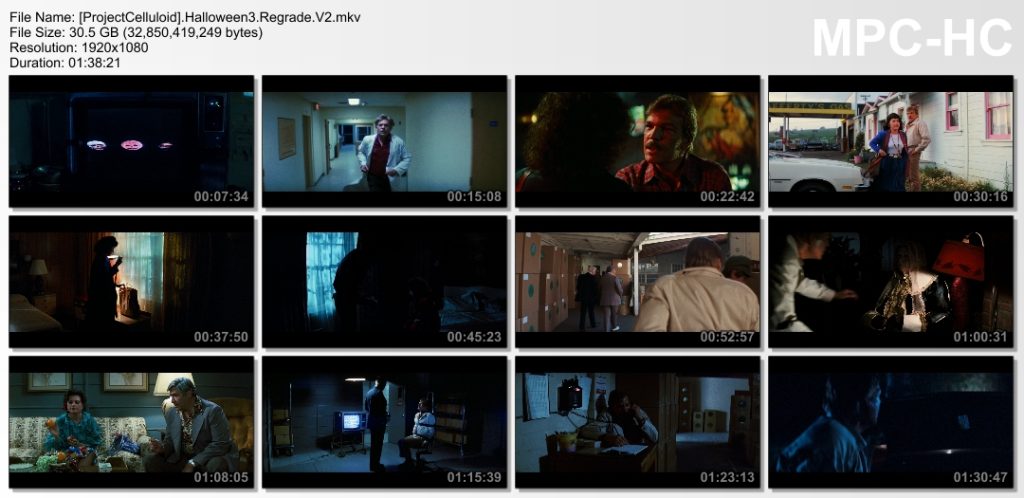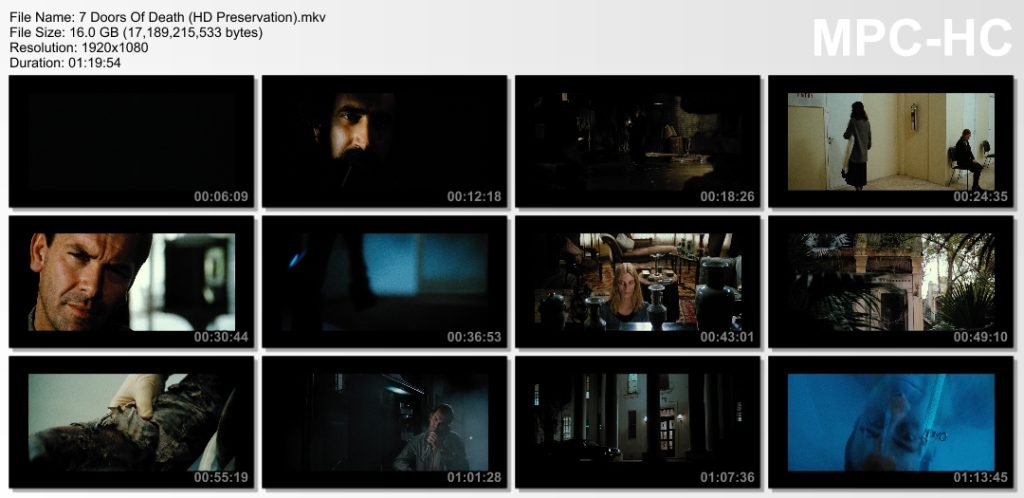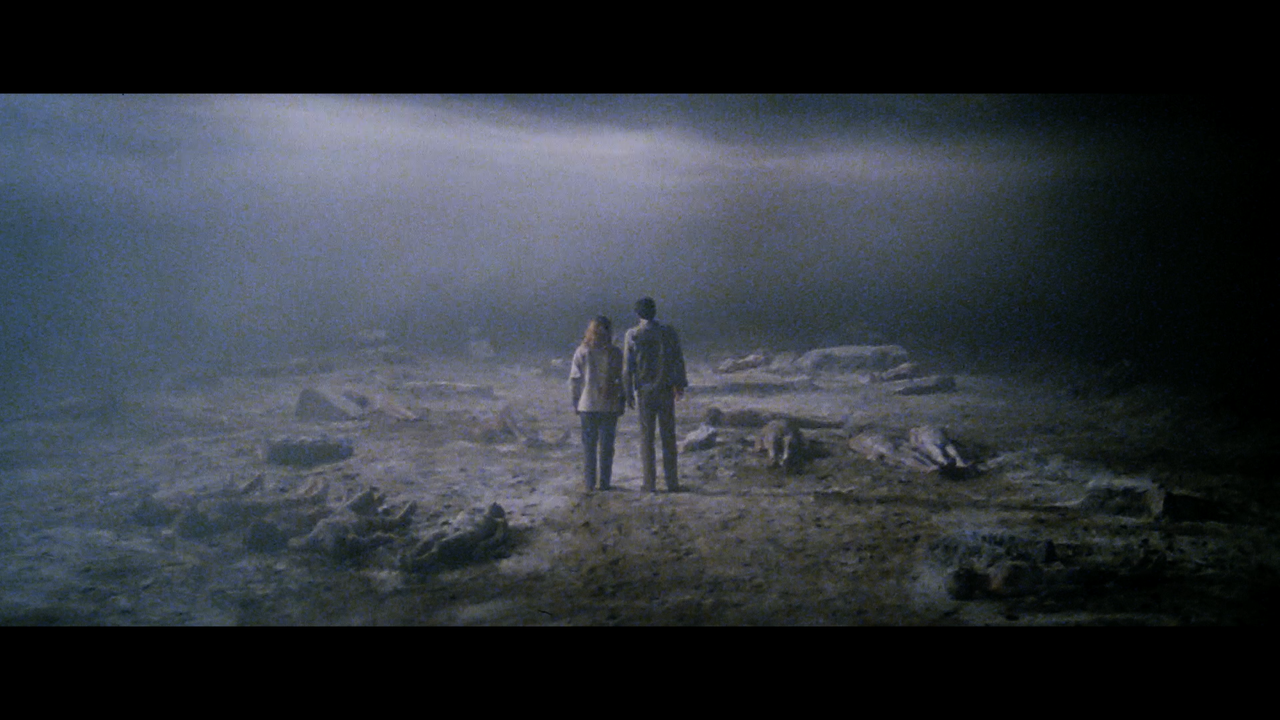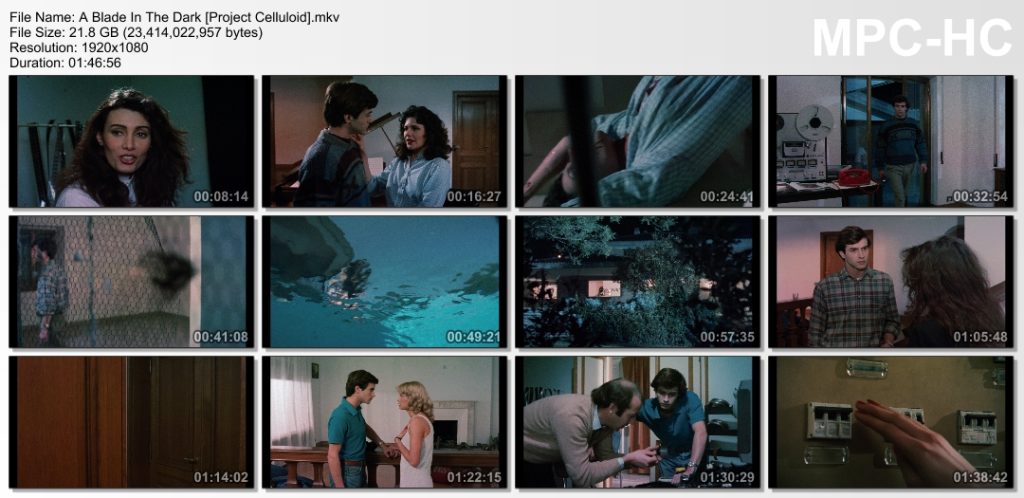Portfolio
Opera
35mm Preservation
For this project, I used an outsourced 6.5K scan from a Lasergraphic Scanstation of an original, theatrical release print of the movie.
This project is currently unfinished and still in progress, aside from a preview release, as seen above, as well as a color calibration render test, as seen below.
The plan is to color grade it with a calibration reference (and cross-referencing with my memories of this print being projected) and then to render–encode it in ultra-high definition with high-dynamic range.
Manhunter
35mm Preservation
Rented out an original Italian-import theatrical release print from a private collector and had it outsource-scanned in 4K on a Blackmagic Cintel.
After working on the preview release seen above, I ended up re-rendering the scan once again at a later point in order to do a more proper reel-by-reel color grade under the supervision of a peer who has attended a projection of Michael Mann’s personal print, and then render-encode it in ultra-high definition with high-dynamic range.
Further down the line, I may revisit this project to obtain another release print of the movie and have it re-scanned, since this one was rather noisy and wasn’t in the greatest of conditions. It had a noticeable partial fade on half of the frame. An original U.S. print would be ideal in order to also capture the original Dolby Stereo mix. I have my suspicions that the original theatrical mix differs from what was produced for home media releases over the years, due to notable mixing differences in the Italian optical print, and the English title cards.
Inferno
35mm Preservation
Rented out an original theatrical release print from a private collector for this project and had it outsource-scanned in 4K on a Blackmagic Cintel. I then did the render-encoding in ultra-high definition with high-dynamic range.
Color grading was done under the supervision of a number of peers who have attended numerous unfaded 35mm projections of the movie. These reviews helped me fix the Kodak Eastman fade and color-balancing as a whole toward what people remembered seeing.
I may revisit this project one day to either clean up some of the present scanner noise or even re-scan the print to avoid the issue entirely. This would also provide an opportunity to transfer the print element’s Italian magnetic stereo mix, which was unfortunately left uncaptured due to the unavailability of proper equipment at the time.
Additional information about the project can be found here.
Aliens
Seamless Branching & Regrade
Given all the elements I had at my disposal, I decided to create a swiss-army project of sorts to try out a number of different theoretical possibilities that seemed to have gone under the radar amongst my peers.
I decided to regrade the high-definition restoration of Aliens by doing a blanket frame-referenced color-match between it and a privately scanned 35mm release print to try and emulate the photochemical look with minimal powergrade adjustments in Da Vinci Resolve, introducing stronger color variety/separation and contrast with a notable blue push.
I rendered the re-grade in a wide color gamut (Rec.2020) and converted it to xvyCC via AviSynth afterward, to produce an encode that should theoretically make the most of whatever viewing device is active (HDR-lite that is compatible with any device and should tone-map accordingly). This was done to help mitigate any outright gamut clipping in blue-heavy sections of the regrade without the need for proper tone-mapping on the viewer’s end if played on a lower-end monitor.
I also created a form of seamless branching (reconstructed from the pre-existing setup I authored originally for the high-definition master) in an MKV file. This relied upon a seldom-used feature known as “ordered chapters” to allow viewers to switch between different cuts of the film on the fly: Theatrical, Special Edition, and the fan-favorited CBS Television cut. That way, I didn’t have to encode three separate files for each individual version of the movie.
Additional information about the project can be found here.
Hellraiser
35mm Preservation
Scanned in 4K on a Blackmagic Cintel from an original theatrical release print owned by a private collector, this project encompassed color-correction, processing, and render-encoding in ultra-high definition with high-dynamic range.
This is also a project I may revisit someday to properly fix the white balancing reel-for-reel, and possibly improve the overall color calibration, as I highly suspect the scan is too warm on the whole. It would hopefully also provide me with an opportunity to get hold of a laserdisc source to sync up higher-fidelity audio.
Additional information about the project can be found here.
The Keep
35mm Preservation
For this project, I rented out an original theatrical release print from a private collector and had it scanned in 4K on a D.I.Y. setup.
For a period of time afterward, I ended up re-rendering this scan after having run it through some automatic clean-up software to produce a cleaner-looking encode. That said, although I produced a full-fledged encode of this version, I never returned to this restoration project to fix the mistakes the software had made—except for a few test shots in which I experimented with manual clean-up.
The reason I abandoned this project was that around that time, I found myself renting out the same print again in order to have it re-scanned on upgraded hardware—a Blackmagic Cintel. The RAW files were then gathered and shipped back to me to produce a remastered, ultra-high definition release—in high dynamic range this time.
Since this still remains the only ultra-high-definition master of this particular movie title to date, I might revisit this scan once again someday to redo the automatic cleanup. It would also give me an opportunity to try and spend more time to better match the color grading of the newer scan to that of the older one.
Additional information about the project can be found here.
Big Trouble In Little China
Regrade
Because the color grading of the two existing high-definition masters of this particular movie does not at all look the way the movie did in its original release prints, I decided to regrade the newer European-sourced master and fix its murky teal-push towards a more contrasting blue grade. I also partially altered the horizontal stretch factor to fix the transfer’s unnatural geometry.
Although I never finished processing the entire movie, I have been going through it and did a careful, shot-by-shot color match that lies between the European master and a scanned 35mm print source. It was further adjusted in Da Vinci Resolve to try and roughly match up with the contrast that is evident in the American master to tease as much highlight and shadow detail out of it as possible.
I may revisit one day to complete this project, though I would likely redo the footage I’ve already processed to try a different approach in the way I’ve been handling the overall contrast and dynamic range levels, to pull as much detail as possible out of the European master while remaining relatively faithful to the photochemical source the regrade is based on.
Additional information about the project can be found here.
Big Trouble In Little China
35mm Preservation
I had this transfer taken from a private collector’s original theatrical release print and scanned in 4K on a D.I.Y. setup for further processing and render–encoding.
Despite having produced several different versions of this transfer, I may revisit it once more someday to produce a newer encode with high-dynamic range to improve upon the scan’s color calibration and grading as a whole, as overall contrast levels were previously problematic. Since this print was very worn and scratchy, using a different print would also likely be beneficial at that point.
Additional information about the project can be found here.
The House With Laughing Windows | La Casa Dalle Finestre Che Ridono
Upscale & Regrade
With no sign of an official high-definition remaster/restoration of this movie on the horizon, I decided to rip the highest-quality encode of a previously restored standard-definition, Italian DVD and then AI-upscaled it to a more contemporary resolution.
I applied a custom grain filter to somewhat emulate the original master’s grain levels in high-definition to help hide some of the upscaling artifacts. I also did some loose scene-by-scene regrade to make it look more photochemically neutral.
I may revisit this film one day, especially if no official Blu-ray release is planned anytime soon, to improve on the overall image quality and to preserve as much detail as possible during the upscaling process. I would also like to try and regrade it to an older standard-definition master that appears to have been sourced from a photochemically timed film element.
Additional information about the project can be found here.
Halloween 3: Season of the Witch
Regrade
After stumbling across a random standard-definition pan & scan master of Halloween 3 by happenstance, I noticed that it appeared to have been sourced from some sort of positive film element that had undergone the photochemical timing process.
Based on this observation, I decided to take the Shout! Factory high-definition restoration of the movie—stemming from the movie’s original camera negatives and produce a scene-by-scene regrade based on the older pan&scan master.
I may revisit this someday given an ultra-high-definition release by Shout! Factory was produced sometime after I rendered and encoded my project, but I’m mostly content with how it turned out—as it gave the movie a much moodier look as a whole—with only minor kinks I wouldn’t mind fixing in retrospect.
Additional information about the project can be found here.
The Keep
Regrade
After having seen a mediocre-at-best HDTV upscale as the closest thing to a high-definition release of this movie to the public, I decided to try and see if I could improve it to some degree. Most notably, I wanted to try and reduce the early telecined look of the master by attempting to emulate the look of an original 35mm trailer print.
Though the project never progressed past early preliminary tests to gauge whether or not the Da Vinci Resolve Powergrade I created looked presentable, it succeeded in the goal I had had in mind and gave the master a pale, ethereal look that reduced the presence of magenta, all the while also shoulder-curving the highlights to help hide egregious blow-outs, allowing brighter parts of the image to roll-off to white rather than resulting in a harsh clip to white.
Further tweaking would’ve likely been necessary though to bring back flesh tones as well as an overall bump in saturation. A custom grain filter would have also benefited the image to help fake detail and give the master a more organic appearance.
Additional information about the project can be found here.
The Beyond | The 7 Doors of Death
Reconstruction & Regrade
I have always been fascinated by the censored US export cut of The Beyond, given its extensive and unique nature—going out of its way to not only artfully hide its excessive gore but to also rescore and remix the movie in Dolby Stereo. Unfortunately, that particular version of the movie has never been available on Laserdisc, DVD or Blu-Ray, so I sought out a rip of an original VHS tape of this lost cut and re-edited the uncut Italian version of the Grindhouse high-definition master to mimic the presentation of the VHS edit.
Having seen what the movie looks like on 35mm, I also took the liberty to do a blanket regrade of the project to emulate the photochemical timing—giving the movie a darker and tealer look.
Additional information about the project can be found here.
A Blade In The Dark | La Casa Con La Scala Nel Buio
Regrade
After having personally seen a 35mm projection of this title, I decided to pick up a copy of the movie’s only currently existing high-definition master for home viewing—only to discover that it looked completely different. Based on my memory of the print screening and a few photos I took during the screening, I attempted to recreate the look of the print via a basic global regrade using Da Vinci Resolve and few plugins I had at hand.
The resulting grade does help the movie’s atmosphere quite a bit and gets it closer to how it looked on an original Italian AGFA release print. I refrained, however, from doing any major adjustments on a scene-by-scene basis and did not alter the brightness excessively because I had no proper reference and had not been paying all that close attention to how the movie looked at the time of the screening.
Additional information about the project can be found here.
Nightbreed
Regrade
After having seen the “missing blues” situation in Clive Barker’s Hellraiser, I decided to do a little digging into Nightbreed to see if it was perhaps supposed to sport a different look than what the Shout! Factory restoration had to offer. One source that stuck out was a very dark and cold-looking trailer that appeared to have been sourced from a positive element.
Prompted by this, I did some experimental frame matching using a ripped DVD proxy of mine to see how the resultant Da Vinci Resolve powergrades would look when applied to the movie on a scene-by-scene basis.
However, it soon became apparent that not only a lot of fine-tuning would be required to get good results, but it also came to my attention that the 35mm prints of the movie actually did not look too dissimilar to the existing high-definition master with a notable emphasis on golden tones. With that in mind, I decided to nix the project as I deemed it wouldn’t really be a worthwhile effort.
Additional information about the project can be found here.
Hellbound: Hellraiser 2
Regrade
I experimented with Da Vinci Resolve’s powergrades that I had put together for the original Hellraiser regrade project and applied them to scenes of its sequel’s restoration—which sported the same digital color grade job as the first film and allowed for this seamless interchange between movies.
Though never fully rendered/encoded, it was an interesting experiment that allowed me to ballpark this movie towards the presentation of the prequel, as well as a German trailer that appears to be sourced from a positive element.
Additional information about the project can be found here.
Hellraiser
Regrade
Attempted to software-match frames from the current-most high-definition master of the movie (hybridized between two separate releases to create the best looking encode to work off of) to a private DIY scan of a—presumably slightly faded—Fuji release print of the movie.
The grade was then further iterated upon in Da Vinci Resolve to expand contrast on a global and scene-by-scene basis to give the entire movie a darker, more contrasting and cooler look throughout. This was done most educated guessing based on a series of reference images that had been sent to me.
Though crude and primitive in retrospect, the project served as an early foray into my continued efforts to produce 35mm-based regrades for other titles. It also introduced me to a variety of different tools and methods that I still use today—to much better effect. I may revisit this project once an ultra-high-definition restoration gets produced to fix the issues that plagued the project at the time.
Additional information about the project can be found here.






